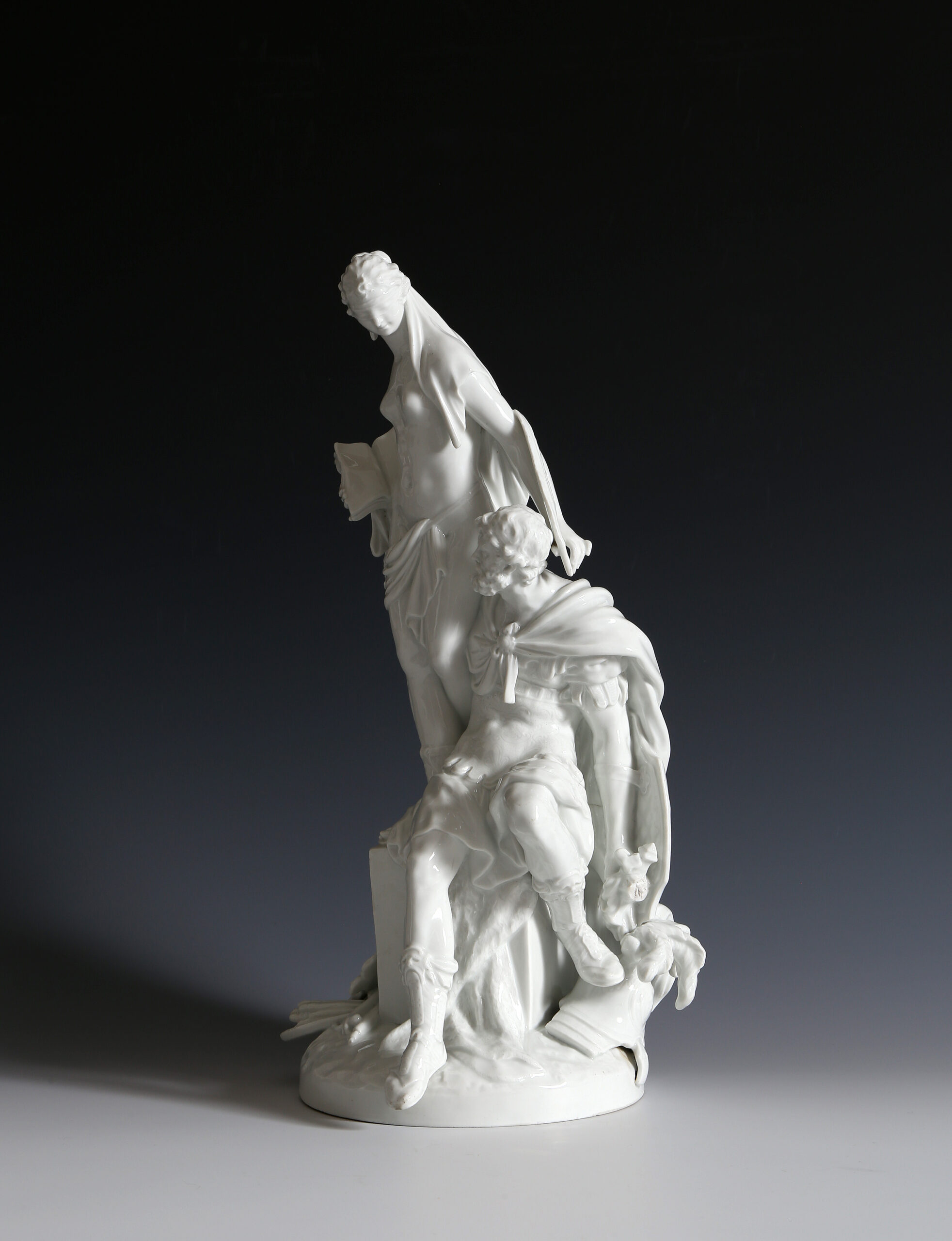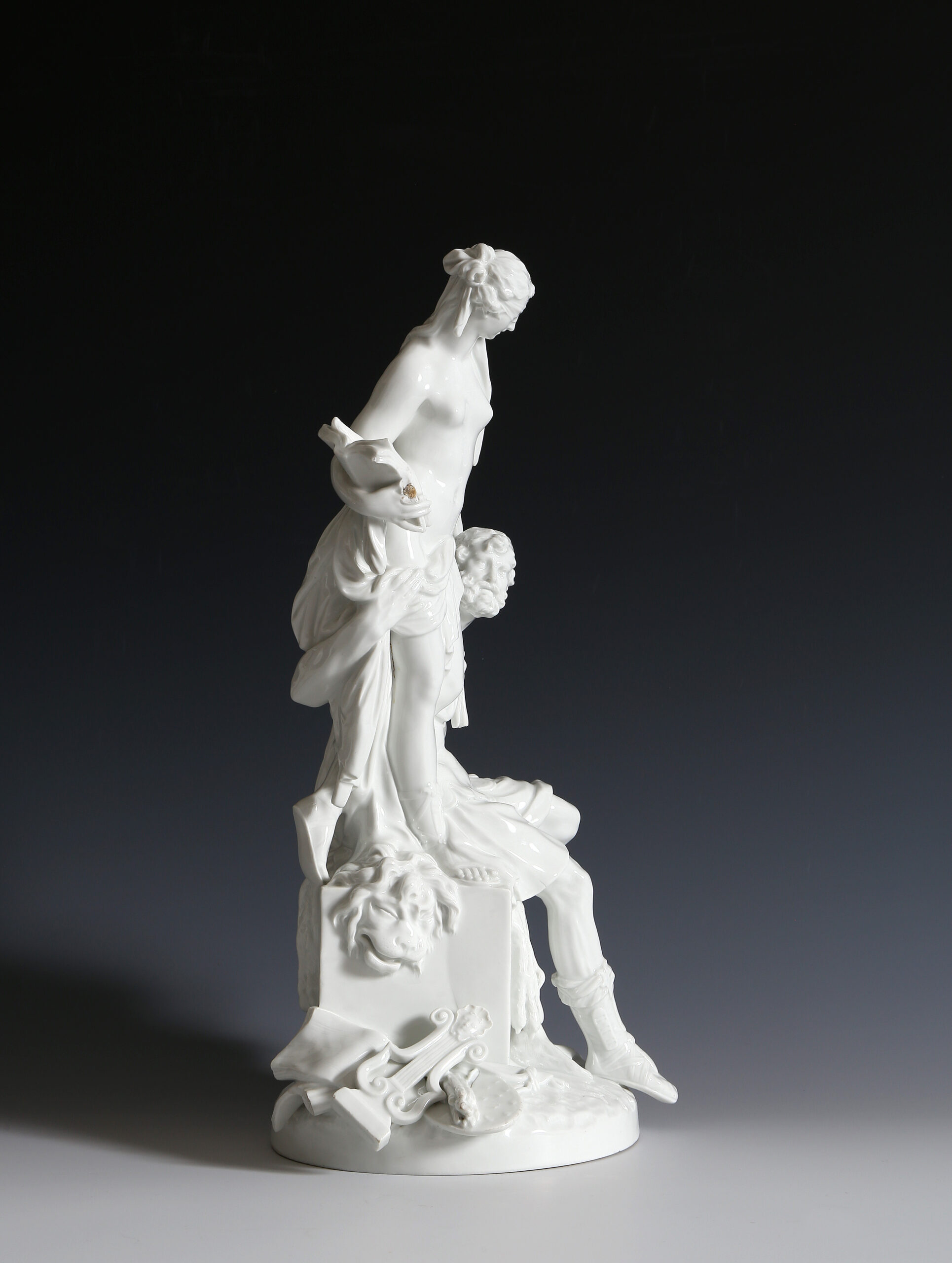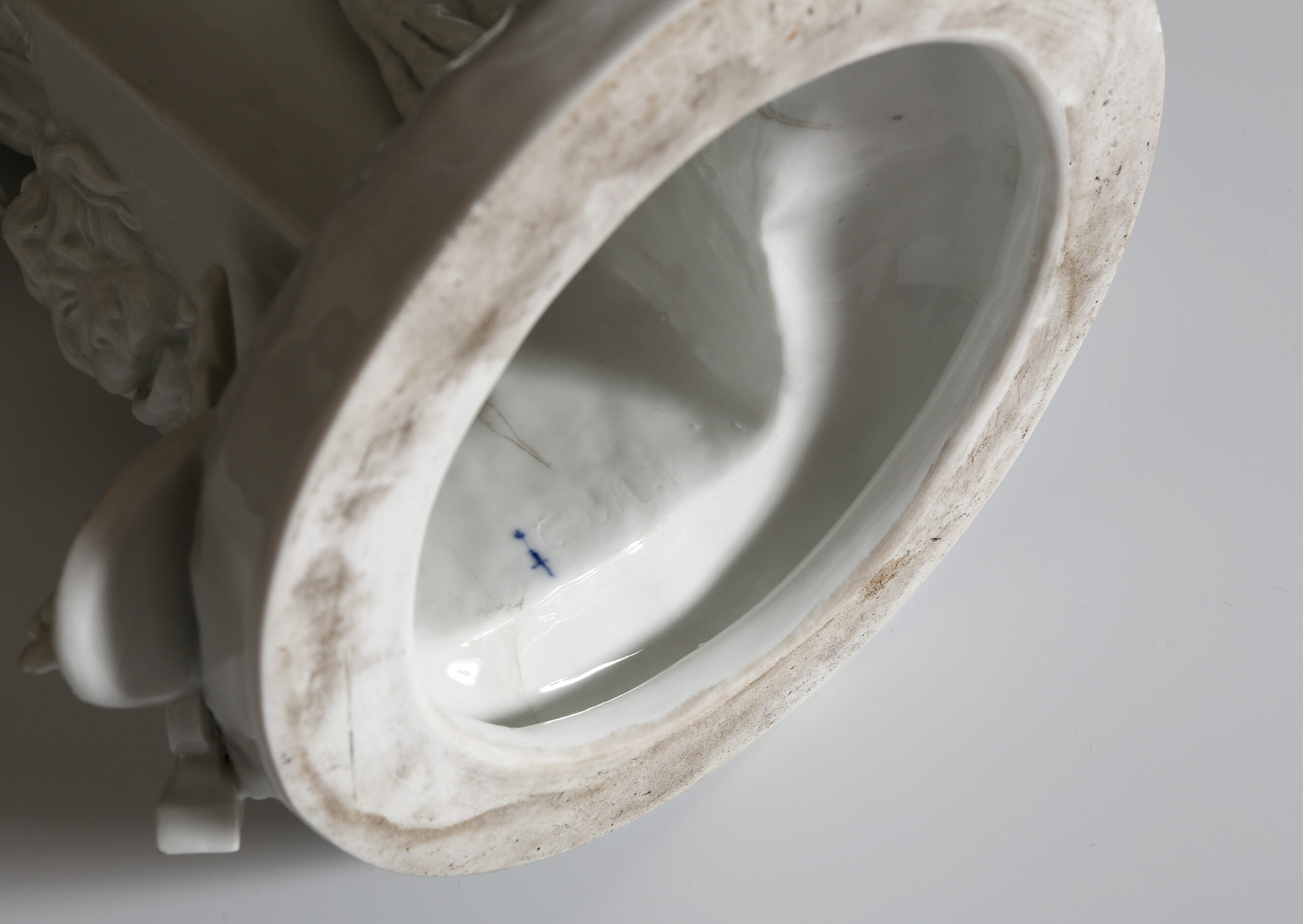
Modelled with Clio (or Kleio) as the muse of history, standing holding an open book standing above a seated figure of Mars dressed in armour. Mars holds a sword and a shield with a Medusa-head on his left arm. He gazes upwards to History, who stands blindfolded on the block beside him with drapery descending from her head, Mars’ right arm clasps her thighs. She holds an open book and a long quill pen. A lion skin is draped over the square block. To one side at its base is a lyre, a palette and an open book, and to the other is a plumed helmet.
Joanna Lessmann, of the Museum für Kunst und Gewerbe, Hamburg, has linked this group with a payment to Wilhelm Christian Meyer between 1st June 1766 and 31st May 1767, for a group with ‘a 2 foot pedestal’. This is the first documented work of the artist in the Berlin factory, where he had arrived in 1766 at the instigation of his brother, the modeller Friedrich Elias Meyer who had come from Meissen during the Seven Years War.
The subject of Mars resting after his triumphant wars whilst Peace encourages the Arts to flourish and records his great feats clearly refers to Frederick the Great, the owner of the Berlin factory, in the immediate aftermath of his triumphs in the Seven-Years War.
This brilliantly conceived group is believed to be the largest figure group made at Berlin in the 18th century and is the masterpiece of Wilhelm Christian Meyer.
Dorothee Heim notes that contemporaries considered the design of this group to be so progressive that it was still presented to the public twenty years later as a representative work of art by KPM at the Academy Exhibition of 1789.
Karl Heinrich Schwarzkopf, adapted the model to classicist design principles in March 1790. In doing so, he retained the basic composition[1]. This can be seen in a biscuit porcelain figure in the Hamburg Museum for Arts and Crafts.
The other white examples that we have been able to find are in the Victoria and Albert Museum, the Hamburg Museum für Kunst und Gewerbe, the Kunstgewerbemuseum, Berlin and two in private collections. Coloured examples are in The Belvedere, Schloss Charlottenburg, Berlin (Baer 1972, p. 47 and pl. 5) and the Markisches Museum, Berlin. There is also said to be an example in the Museo di Palazzo Venezia, Rome (we have not confirmed this).
Condition:
Horn in her left hand, hilt of sword and tip of fasces missing, no restoration
References:
Heim 2016
Dorothee Heim, Die Berliner Porzellanplastik und ihre skulpturale Dimension 1751–1825, Der Sammlungsbestand des Kunstgewerbemuseums, Staatliche Museen zu Berlin, (Schnell & Steiner, 2016) pp. 243-247
Köllmann 1966
Erich Köllmann, Berliner Porzellan, (1966), I p. 121, II, p.308 and plate 45a [here described as by Friedrich Elias Meyer]
Lessmann 1993
Joanna Lessmann, Michaela Braesel, Katharina Dück, Berliner Porzellan des 18. Jahrhunderts, Museum für Kunst und Gewerbe, (1993), p. 195, no. 260
Baer 1972
Winifred Baer, ‘Berliner Porzellan vom Rokoko bis zum Biedermeier’, Keramos, 1972
Price: £19,500

[1] Heim 2016, p. 247.




